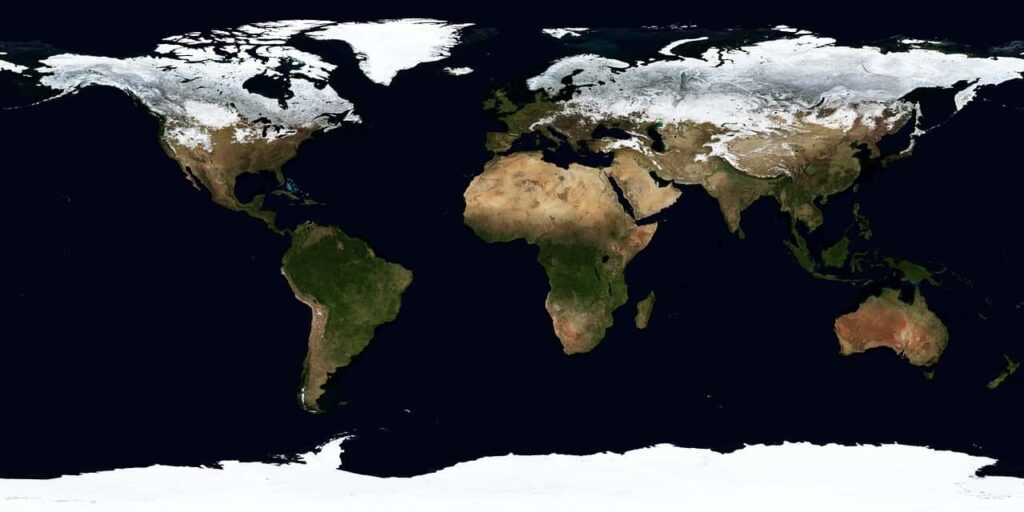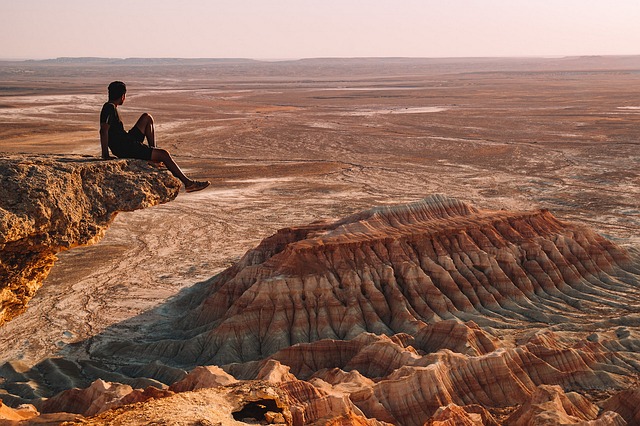The Earth is an intricate system comprised of countless natural phenomena and processes. Understanding its complexities has given rise to various scientific disciplines, each with its own distinct focus and methodology. Two prominent fields that delve into the Earth’s composition, structure, and processes are geography and geology. While both disciplines are closely related, they differ in their approaches, scope, and primary areas of study. This article aims to shed light on the contrasting aspects of geography and geology, exploring their unique perspectives and highlighting their interconnectedness in unraveling the secrets of our planet.
Table of contents
- 1. Introduction: Defining Geography and Geology
- 3. Scope and Objectives
- 3. Methodology and Approaches
- 4. Areas of Study
- 5. Interdisciplinary Connections
- 6. The Interplay of Geography and Geology: Case Studies
- 7. Current Challenges and Future Directions
- 8. Table of Geography Vs. Geology
- 9. Conclusion
- Bibliography
1. Introduction: Defining Geography and Geology
Geography and geology are two interconnected scientific disciplines that contribute to our understanding of the Earth. While both disciplines share a common interest in studying the planet, they diverge in their methodologies and focus areas. Geography primarily examines the interactions between humans and their environment, while geology explores the Earth’s structure, processes, and history.
3. Scope and Objectives
Geography encompasses a broad range of topics, including human geography, physical geography, and environmental geography. It aims to understand the relationship between humans and their surroundings, examining factors such as population, culture, urbanization, and the impact of human activities on the environment. Geology, on the other hand, concentrates on the Earth’s physical aspects, investigating its rocks, minerals, landforms, and the forces that shape them.
3. Methodology and Approaches
Geography adopts a multidisciplinary approach, drawing upon techniques from various fields such as cartography, remote sensing, and spatial analysis. Geographers employ qualitative and quantitative methods to analyze spatial patterns and processes, often utilizing Geographic Information Systems (GIS) to organize and visualize data. Geology employs scientific methods to study the Earth’s materials and processes, including fieldwork, laboratory analysis, and geological mapping. Geologists analyze rock formations, fossils, and minerals to unravel the Earth’s history and understand its dynamic processes.

4. Areas of Study
4.1 Geography: Human-Environment Interactions
Human geography explores the relationship between societies and their environment, including topics such as population distribution, migration, urbanization, and land use. It examines how human activities impact the environment and the reciprocal effects of environmental changes on societies. Environmental geography focuses on the natural environment, investigating ecosystems, climate change, natural hazards, and conservation efforts.
4.2 Geography: Physical Landscapes and Systems
Physical geography studies the Earth’s physical processes, landforms, and natural systems. It explores the formation of mountains, rivers, deserts, and other landforms, as well as the dynamics of weather and climate patterns. Physical geographers investigate the interconnections between land, water, atmosphere, and biosphere, emphasizing the interactions and feedback mechanisms that shape the Earth’s physical environment.

4.3 Geology: Earth’s Structure and Evolution
Geology delves into the Earth’s structure, composition, and tectonic processes that have shaped its history. It examines the layers of the Earth, including the crust, mantle, and core, as well as plate tectonics, volcanism, and earthquakes. Geologists analyze rocks, minerals, and fossils to unravel the Earth’s geological history and understand the processes that drive its continuous transformation.
4.4 Geology: Rocks, Minerals, and Fossils
Another key focus of geology is the study of rocks, minerals, and fossils. Geologists analyze the composition, texture, and formation of rocks to decipher the geological history of an area. They also investigate minerals, their properties, and their distribution, providing insights into the Earth’s chemical and physical processes. Fossils play a crucial role in geology, as they offer evidence of past life forms and provide valuable information about the Earth’s evolutionary history.
5. Interdisciplinary Connections
Geography and geology share common ground and often intersect with other scientific disciplines. For example, geographers collaborate with climatologists, ecologists, and social scientists to study the impacts of climate change on human societies and natural systems. Geologists work closely with paleontologists, geochemists, and geophysicists to understand the Earth’s history, explore energy resources, and assess geological hazards.
6. The Interplay of Geography and Geology: Case Studies
6.1 Impact of Geological Processes on Human Settlements
Geological factors such as soil composition, slope stability, and access to water resources significantly influence human settlement patterns. Understanding these geological processes helps geographers and urban planners make informed decisions regarding infrastructure development, land use planning, and hazard mitigation.
6.2 Geological Contributions to Climate Change Studies
Geologists play a crucial role in reconstructing past climate conditions through the study of ice cores, sediment layers, and fossil records. Their findings provide essential data for climate scientists and geographers studying long-term climate trends, helping to predict future climate scenarios and inform mitigation strategies.
6.3 Geographic Information Systems (GIS) in Geology
GIS technology plays a pivotal role in both geography and geology. It allows geographers to analyze spatial data, visualize patterns, and create maps that aid in understanding various geographic phenomena. Geologists use GIS to analyze and integrate geological data, such as rock formations, faults, and mineral resources, enabling efficient resource exploration, hazard assessment, and environmental management.
7. Current Challenges and Future Directions
As the Earth faces unprecedented environmental challenges, geography and geology play vital roles in addressing these issues. Challenges such as climate change, natural hazards, and sustainable resource management require interdisciplinary approaches and collaboration between geographers, geologists, and other scientific disciplines. Future directions include incorporating advanced technologies like remote sensing, machine learning, and big data analytics into geographic and geological research to enhance our understanding of the Earth’s processes.
8. Table of Geography Vs. Geology
Here’s a summary of the article in a three-column table format, including a serial number for each point:
| # | Geography | Geology |
|---|---|---|
| 1 | Geography examines human-environment interactions. | Geology explores the Earth’s structure and processes. |
| 2 | Scope includes human geography and physical geography. | Scope encompasses the Earth’s composition and tectonic history. |
| 3 | Methodology involves qualitative and quantitative analysis. | Methodology utilizes scientific methods and laboratory analysis. |
| 4 | Areas of study include human-environment interactions. | Areas of study encompass Earth’s structure and evolution. |
| 5 | Interdisciplinary connections with climatology and more. | Interdisciplinary connections with paleontology and more. |
| 6 | Case studies on the impact of geological processes. | Case studies on climate change and geological hazards. |
| 7 | GIS technology aids in spatial analysis and mapping. | GIS technology aids in geological data analysis and mapping. |
| 8 | Challenges include climate change and sustainable resource management. | Challenges include environmental hazards and resource exploration. |
| 9 | Future directions involve advanced technologies and collaboration. | Future directions involve incorporating advanced technologies and interdisciplinary collaboration. |
9. Conclusion
Geography and geology are two interconnected disciplines that offer unique perspectives on the Earth’s dynamic processes. While geography focuses on the human-environment relationship and the spatial patterns of human activities, geology unravels the Earth’s geological history and the forces that have shaped it over millions of years. The interplay between geography and geology is essential for addressing current and future challenges, as their integration enables a comprehensive understanding of the Earth’s complexities and fosters sustainable solutions for the benefit of humanity and the planet.
Summary: Geography focuses on human-environment interactions, analyzing the relationship between societies and their surroundings, while geology explores the Earth’s structure, processes, and history, investigating rocks, minerals, and fossils. Geography adopts a multidisciplinary approach, utilizing techniques such as cartography and spatial analysis, while geology employs scientific methods and laboratory analysis. Both disciplines contribute to our understanding of the Earth’s complexities, with geography emphasizing the human impact on the environment and geology unraveling the Earth’s geological history and the forces that have shaped it.
Bibliography
- Arthur, R., & Waltham, T. (2019). Geological Processes: A Global Introduction. Routledge.
- Christopherson, R. W., & Thomsen, D. C. (2018). Geosystems: An Introduction to Physical Geography. Pearson.
- DiBiase, R. A., et al. (2017). Geographic Information Science & Technology Body of Knowledge (4th ed.). Association of American Geographers.
- Marshak, S. (2015). Essentials of Geology. W. W. Norton & Company.
- Skinner, B. J., et al. (2019). The Blue Planet: An Introduction to Earth System Science. Wiley.
- Strahler, A. H., & Strahler, A. N. (2016). Introducing Physical Geography. Wiley.
- Tarbuck, E. J., et al. (2014). Earth: An Introduction to Physical Geology. Pearson.
- Turner, B. L., et al. (2017). Geography’s Contributions to Scientific Understanding: A Landscape of Grand Challenges. Annals of the American Association of Geographers, 107(4), 895-911.
- Wolman, M. G., & Schick, A. P. (2018). Essential Earth: A Textbook Companion Website for Geology. W. H. Freeman and Company.
- Zeigler, D. J., & Montello, D. R. (2020). GIS and Geocomputation for Water Resource Science and Engineering. Wiley.



 For all latest articles, follow on Google News
For all latest articles, follow on Google News